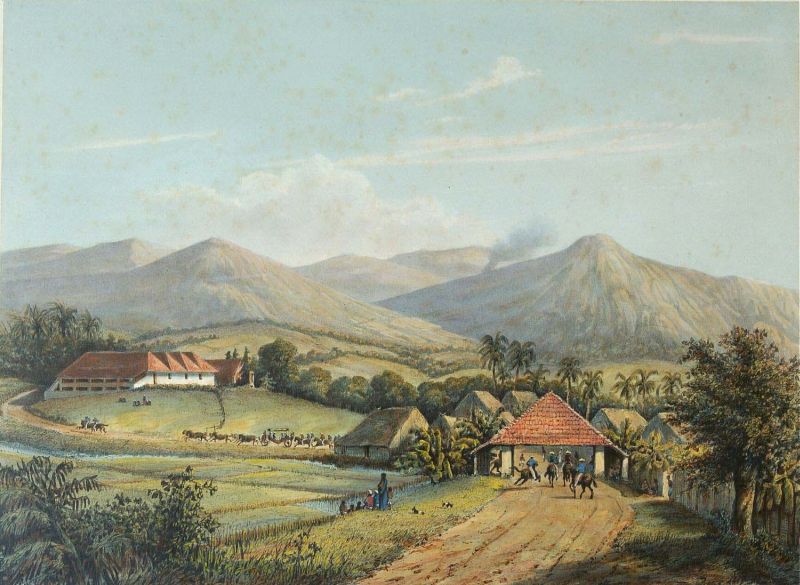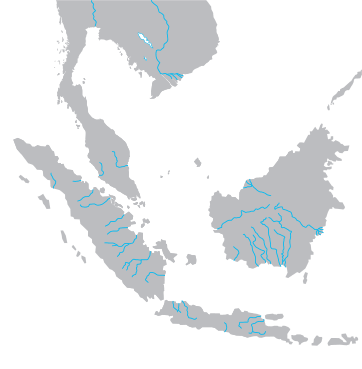|
Indonesian Names
Indonesian names and naming customs reflect the multicultural and multilingual nature of the over 17,000 islands in the Indonesian archipelago. The world's fourth most populous country, Indonesia is home to numerous ethnic groups, each with their own culture, custom, and language. The naming customs by no means are consistent, and may differ by ethnic group. For example, most western Indonesians do not have surnames (exceptions: Bataks, Nias, Mentawai, Enggano, and some Dayaks), while eastern Indonesians do generally have it (exceptions: Balinese, West Nusa Tenggara people, and some ethnic groups in Sulawesi). Honorifics General In Indonesia, ranks and professional titles are used. It is also customary to use ''Pak'', ''Bapak'', or ''Saudara'' to address men and ''Bu'', ''Ibu'', or ''Saudari'' to address women. ''Pak'' and ''Bapak'' are literally translated as "father". ''Bapak'' is more formal and is used much like the English word, "Mister". ''Saudara'' (for men) ... [...More Info...] [...Related Items...] OR: [Wikipedia] [Google] [Baidu] [Amazon] |
Balinese Language
Balinese is an Austronesian language spoken on the Indonesian island of Bali, as well as Northern Nusa Penida, Western Lombok, Southern Sumatra, and Sulawesi. Most Balinese speakers also use Indonesian. The 2000 national census recorded 3.3 million people speakers of Balinese, however the Bali Cultural Agency estimated in 2011 that the number of people still using the Balinese language in their daily lives is under 1 million. The language has been classified as "not endangered" by ''Glottolog''. The higher registers of the language borrow extensively from Javanese: an old form of classical Javanese, Kawi, is used in Bali as a religious and ceremonial language. Classification Balinese is an Austronesian language belonging to the Malayo-Polynesian branch of the family. Within Malayo-Polynesian, it is part of the Bali–Sasak–Sumbawa subgroup. Internally, Balinese has three distinct varieties; Highland Bali, Lowland Bali, and Nusa Penida Balinese. Demogra ... [...More Info...] [...Related Items...] OR: [Wikipedia] [Google] [Baidu] [Amazon] |
Java
Java is one of the Greater Sunda Islands in Indonesia. It is bordered by the Indian Ocean to the south and the Java Sea (a part of Pacific Ocean) to the north. With a population of 156.9 million people (including Madura) in mid 2024, projected to rise to 158 million at mid 2025, Java is the world's List of islands by population, most populous island, home to approximately 55.7% of the Demographics of Indonesia, Indonesian population (only approximately 44.3% of Indonesian population live outside Java). Indonesia's capital city, Jakarta, is on Java's northwestern coast. Many of the best known events in Indonesian history took place on Java. It was the centre of powerful Hindu-Buddhist empires, the Islamic sultanates, and the core of the colonial Dutch East Indies. Java was also the center of the History of Indonesia, Indonesian struggle for independence during the 1930s and 1940s. Java dominates Indonesia politically, economically and culturally. Four of Indonesia's eig ... [...More Info...] [...Related Items...] OR: [Wikipedia] [Google] [Baidu] [Amazon] |
Sumatra
Sumatra () is one of the Sunda Islands of western Indonesia. It is the largest island that is fully within Indonesian territory, as well as the list of islands by area, sixth-largest island in the world at 482,286.55 km2 (182,812 mi.2), including adjacent islands such as the Simeulue Island, Simeulue, Nias Island, Nias, Mentawai Islands, Mentawai, Enggano Island, Enggano, Riau Islands, Bangka Belitung and Krakatoa archipelago. Sumatra is an elongated landmass spanning a diagonal northwest–southeast axis. The Indian Ocean borders the northwest, west, and southwest coasts of Sumatra, with the island chain of Simeulue, Nias, Mentawai Islands, Mentawai, and Enggano off the western coast. In the northeast, the narrow Strait of Malacca separates the island from the Malay Peninsula, which is an extension of the Eurasian continent. In the southeast, the narrow Sunda Strait, containing the Krakatoa archipelago, separates Sumatra from Java. The northern tip of Sumatra is near ... [...More Info...] [...Related Items...] OR: [Wikipedia] [Google] [Baidu] [Amazon] |
Greater India
Greater India, also known as the Indian cultural sphere, or the Indic world, is an area composed of several countries and regions in South Asia, East Asia and Southeast Asia that were historically influenced by Indian culture, which itself formed from the various distinct indigenous cultures of South Asia. It is an umbrella term encompassing the Indian subcontinent and surrounding countries, which are culturally linked through a diverse cultural cline. These countries have been transformed to varying degrees by the acceptance and introduction of cultural and institutional elements from each other. The term Greater India as a reference to the Indian cultural sphere was popularised by a network of Bengali scholars in the 1920s, but became obsolete in the 1970s. Since around 500 BCE, Asia's expanding land and maritime trade had resulted in prolonged socio-economic and cultural stimulation and diffusion of Buddhist and Hindu beliefs into the region's cosmology, in particular in ... [...More Info...] [...Related Items...] OR: [Wikipedia] [Google] [Baidu] [Amazon] |
Prabhu
''Prabhu'' means ''master'' or ''prince'' in Sanskrit and many of the Indian languages; it is a name sometimes applied to God. Surname Prabhu is a surname among Gaud saraswat Brahmins, saraswat Brahmins and other Brahmins across the Konkan Coast in India, from Karnataka and Maharashtra to Goa. As a title "Prabhu" as a title is mainly found among Gaud saraswat Brahmins, Saraswat Brahmins, Karhade Brahmins and other Brahmins in Maharashtra, Karnataka and Goa. Prabhu was a title accorded to the representative of the main village of the ''taluka'' (district) committee. The Prabhus may have also occupied official posts in the central administration, without prejudice to their original posts which were hereditary. Traditionally, a Prabhu was a village chief, Ministers, Zamindars, administrators, landlord and as such a master to the many agricultural labourers that were needed to cultivate his lands. Notable people * Prabhu (actor), Indian actor and film producer * La ... [...More Info...] [...Related Items...] OR: [Wikipedia] [Google] [Baidu] [Amazon] |
Shri
Shri (; , ) is a Sanskrit term denoting resplendence, wealth and prosperity, primarily used as an honorific. The word is widely used in South and Southeast Asian languages such as Assamese, Meitei ( Manipuri), Marathi, Malay (including Indonesian and Malaysian), Javanese, Balinese, Sundanese, Sinhalese, Thai, Tamil, Telugu, Odia, Assamese, Punjabi, Hindi, Bengali, Nepali, Malayalam, Kannada, Sanskrit, Pali, Khmer, and also among Philippine languages. It is usually transliterated as ''Sri'', ''Sree'', ''Shri'', ''Shiri'', ''Shree'', ''Si'', or ''Seri'' based on the local convention for transliteration. In Tamil it evolved to Tiru. The term is used in Indian subcontinent and Southeast Asia as a polite form of address equivalent to the English "Mr." in written and spoken language. "Shri" is also used as a title of veneration for deities or as honorific title for individuals. "Shri" is also an epithet for Hindu goddess Lakshmi, while a '' yantra'' or a mystica ... [...More Info...] [...Related Items...] OR: [Wikipedia] [Google] [Baidu] [Amazon] |
Abdurrahman Wahid
Abdurrahman Wahid ( ; né ad-Dakhil, 7 September 1940 – 30 December 2009), more colloquially known as Gus Dur (), was an Indonesian politician and Islam in Indonesia, Islamic Kyai, religious leader who served as the fourth president of Indonesia, from his 1999 Indonesian presidential election, election in 1999 until he was Impeachment of Abdurrahman Wahid, removed from office in 2001. A long time leader within the Nahdlatul Ulama organization, he was the founder of the National Awakening Party (PKB). He was the son of Ministry of Religious Affairs (Indonesia), Minister of Religious Affairs Wahid Hasyim, and the grandson of Nahdatul Ulama founder Hasyim Asy'ari. Due to a visual impairment caused by glaucoma, he was blind in the left eye and partially blind in his right eye. He was the first (and to date only) president of Indonesia to have had physical disabilities. Wahid was instrumental in lifting the ban on Chinese New Year (). Until 1998, the spiritual practice to celebrate ... [...More Info...] [...Related Items...] OR: [Wikipedia] [Google] [Baidu] [Amazon] |
Malay Language
Malay ( , ; , Jawi alphabet, Jawi: ) is an Austronesian languages, Austronesian language spoken primarily by Malays (ethnic group), Malays in several islands of Maritime Southeast Asia and the Malay Peninsula on the mainland Asia. The language is an official language of Brunei, Malaysia, and Singapore. Indonesian language, Indonesian, a standardized variety of Malay, is the official language of Indonesia and one of the working languages of East Timor. Malay is also spoken as a regional language of Malays (ethnic group), ethnic Malays in Indonesia and the Thai Malays, southern part of Thailand. Altogether, it is spoken by 60 million people across Maritime Southeast Asia. The language is pluricentric and a ISO 639 macrolanguage, macrolanguage, i.e., a group of Mutual intelligibility, mutually intelligible speech varieties, or dialect continuum, that have no traditional name in common, and which may be considered distinct languages by their speakers. Several varieties of it ar ... [...More Info...] [...Related Items...] OR: [Wikipedia] [Google] [Baidu] [Amazon] |
Papuan Language
The Papuan languages are the non-Austronesian languages spoken on the western Pacific island of New Guinea, as well as neighbouring islands in Indonesia, Solomon Islands, and East Timor. It is a strictly geographical grouping, and does not imply a genetic relationship. New Guinea is the most linguistically diverse region in the world. Besides the Austronesian languages, there arguably are some 800 languages divided into perhaps sixty small language families, with unclear relationships to each other or to any other languages, plus many language isolates. The majority of the Papuan languages are spoken on the island of New Guinea, with a number spoken in the Bismarck Archipelago, Bougainville Island and the Solomon Islands to the east, and in Halmahera, Timor and the Alor archipelago to the west. The westernmost language, Tambora in Sumbawa, is extinct. One Papuan language, Meriam, is spoken within the national borders of Australia, in the eastern Torres Strait. Several langua ... [...More Info...] [...Related Items...] OR: [Wikipedia] [Google] [Baidu] [Amazon] |
Kupang Language
Kupang Malay or Kupang language is a Malay-based creole language spoken in Kupang, East Nusa Tenggara, which is on the west end of Timor Island. Kupang Malay is presently used as a lingua franca for inter-ethnic communication, and it also has native speakers. It is based on archaic Malay mixed mostly with Dutch, Portuguese, and other local languages. It is similar to Ambonese Malay with several differences in vocabulary and accent. Its grammatical system resembles other Eastern Indonesian Malay creoles. Kupang Malay originated sometime before the 17th century. Kupang Malay has Rotinese influence. Phonology Like Indonesian, words in Kupang Malay are usually stressed on the penultimate syllable. Some words are stressed on the final syllable as they would be in their source languages. This results in some contrastive stress. Vowels The vowels of Kupang Malay are shown in the chart below. Unlike in Indonesian, there is no schwa in Kupang Malay. The "ia ,"ie, "io",and ... [...More Info...] [...Related Items...] OR: [Wikipedia] [Google] [Baidu] [Amazon] |
Ambonese Language
Ambonese Malay or simply Ambonese is a Malay-based creole language spoken on Ambon Island in the Maluku Islands of Eastern Indonesia. It was first brought by traders from Western Indonesia, then developed when the Dutch Empire colonised the Maluku Islands and was used as a tool by missionaries in Eastern Indonesia. Malay has been taught in schools and churches in Ambon, and because of this it has become a lingua franca in Ambon and its surroundings. Christian speakers use Ambonese Malay as their mother tongue, while Muslims speak it as a second language as they have their own language. Muslims on Ambon Island particularly live in several areas in the city of Ambon, dominant in the Salahutu and Leihitu Peninsulas. While in the Lease Islands, the Christian Ambonese-speaking community is dominant in parts of Haruku, Saparua and Nusa Laut islands. Ambonese Malay has also become lingua franca in Buru, Seram, Geser-Gorom and the south-western Maluku Islands, though with different ... [...More Info...] [...Related Items...] OR: [Wikipedia] [Google] [Baidu] [Amazon] |


